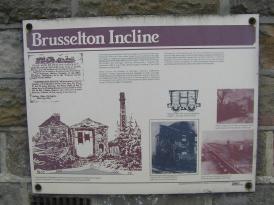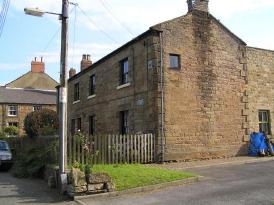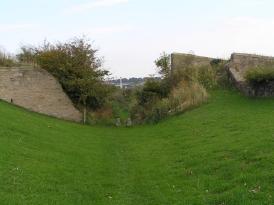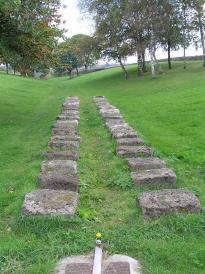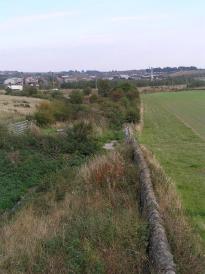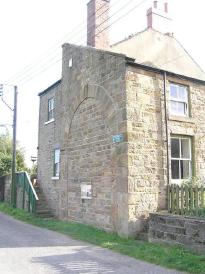Brusselton Incline
Though the Brusselton Inclines had been effectively by-passed in 1843, they still provided the only connection at West Auckland with the Haggerleazes Branch, which ran westwards up the valley of the River Gaunless to Cockfield. This branch, just over 4 miles long, was authorised in an Act of 1824 but the early financial difficulties of the S&DR prevented it being opened until October 1830. This line served a number of collieries en route and the only way out was via the Brusselton Inclines. A passenger service was provided over these inclines from 1 December 1833 to 13 October 1858. This service was diverted onto the Tunnel Branch, which had opened for goods traffic two years earlier. This branch ran from the north end of Shildon Tunnel to West Auckland, where it joined the 1825 route. Opening of this line obviated the need for the Brusselton Inclines and they too fell into disuse. For five years the trains from St Helens to Bishop Auckland had to reverse at the north end of Shildon Tunnel. Through running of passenger trains was finally achieved on 1 August 1863 (the line having been opened to goods since 1 February 1863) via the curve from Bishop Auckland to Fieldon Bridge Junction in conjunction with the opening of the South Durham and Lancashire Union Railway.
Brusselton Incline - the west incline was 1,960 yards long with a rise of 150 feet, whilst the east side was 880 yards long with a rise of 90 feet. The original engine of 1825 was built by Robert Stephenson and Company at a cost of £3,482 15s 0d. It had two 20’ by 8’ diameter boilers, feeding two 30h.p. engines with 30" by 90.5" cylinders. Originally they drove a single drum mounted on a vertical axis, but in 1826, a horizontally mounted double acting drum was installed. The drum consisted of two sections whose diameters were in the same 2:1 ratio as the lengths of the two slopes. A lever-operated brake was also fitted.
In 1831 the traffic over the bank was increased by the installation of a larger engine of 80h.p built by R. & W. Hawthorn, working a 10 ft diameter drum. The maximum capacity was attained on 6 September 1839, with the haulage of 67 runs of 12 wagons per run, giving a total of 904 wagons in a day, loaded with 2,120 tons of coal. As with most stationary engines a breakdown meant closure of the whole line; this happened when the drum collapsed on 3 April 1837. The Hawthorn engine continued in use until the inclines were by passed by the Tunnel Branch, and it was advertised for sale in 1859. At Brusselton Summit there used to be two rows of cottages, North Terrace and South Terrace. The former consisted of 31 cottages but has been demolished, whilst most of the latter still survives. The most easterly of these cottages has been adapted as a dwelling house. It was originally the engine-house. It is notable for the unusual patterns in the stonework that resulted in the need to meet the thrusts of the winding engine and pull of the ropes. Behind the house is the pond, which supplied water for the boiler of the winding engine.
Brusselton Incline New Shildon Drift 1949 - 1965
Brusselton Incline Furnace Pit 1866 - 1923
Brusselton Incline Thickley 1930 - 1953
Brusselton Incline Throstlegill Drift 1930s - 1940s
Brusselton Incline Ladysmith 1920s - 1948
Brusselton Incline Brusselton Tower Drifts 1925 - 1963
Brusselton Incline Brusselton 1834 - 1968
